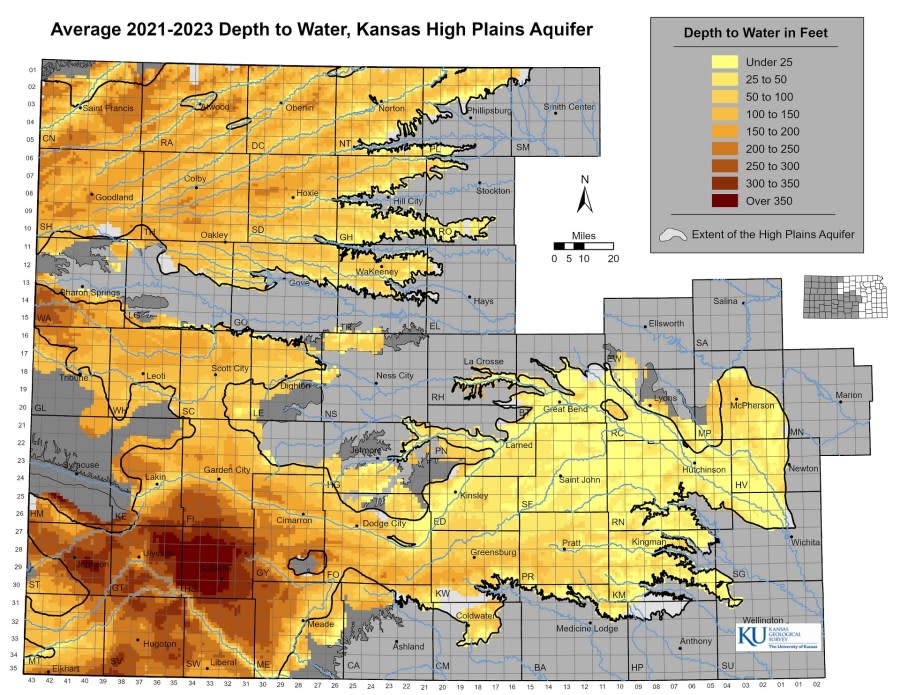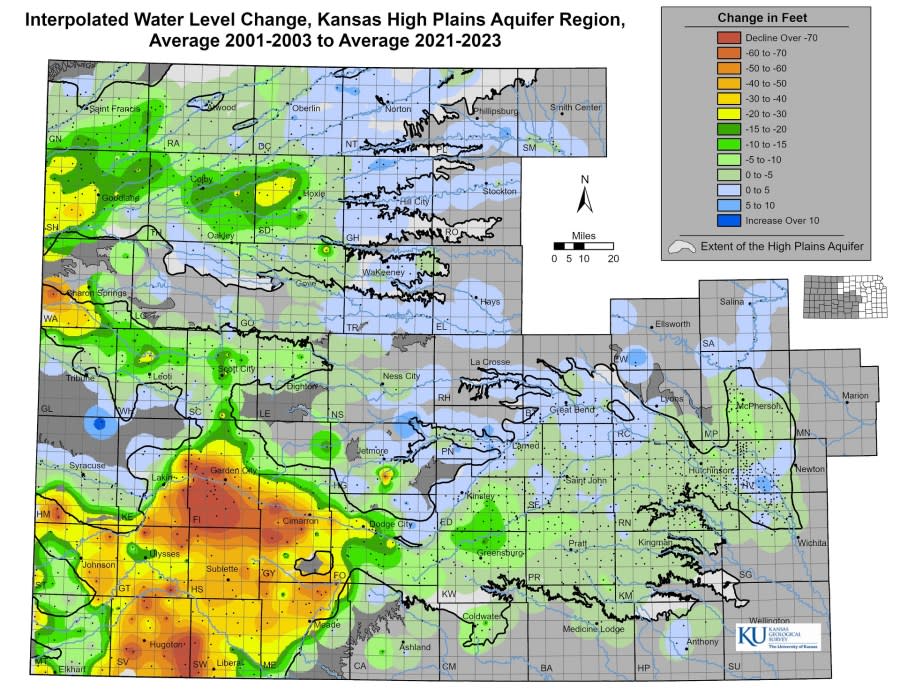Scientists: Aquifer levels in Kansas dropping overall
WICHITA, Kan. (KSNW) — The Kansas Geological Survey checks groundwater levels in Kansas each year. The most recent levels show mixed results, including a drop in one of the major sources of Wichita’s water.
The Kansas Geological Survey, based at the University of Kansas, and the state’s Division of Water Resources measure water levels in about 1,400 wells to monitor the health of the High Plains aquifer and other aquifers in western and south-central Kansas.
Equus Beds
One component of the aquifer is the Equus Beds, a significant water source for Wichita, Hutchinson and surrounding towns.
Persistent drought in Kansas affecting aquifer levels
KGS says the Equus Beds, covering portions of Sedgwick, Reno, Harvey, and McPherson counties, declined 1.62 feet in 2023 after dropping 2.11 feet in 2022 and .14 feet in 2021.
KSN News asked the City of Wichita about the drop. A spokesperson said the ongoing drought has caused water levels to drop in the Equus Beds and at Cheney Reservoir, the other main source of Wichita water.
“We are being mindful of drought conditions and taking steps to try to mitigate the impact of the drought on Wichita through our ongoing drought awareness messaging and by moving into stage 1 in January of 2023 of our drought response plan,” Megan Lovely, Wichita communications manager, said. “The trigger for stage 2 of the drought response plan has not yet been reached, but residents may follow along and get updates at savewichitawater.com.”
Great Bend Prairie aquifer
A second component of the aquifer is the Great Bend Prairie aquifer. It dropped 1.12 feet last year after dropping 2.32 feet in 2022 and 0.81 feet in 2021. This aquifer includes Pratt and Stafford counties and parts of Barton, Edwards, Kiowa, Pawnee, Reno and Rice counties.
Watch: Severe thunderstorm produces confirmed tornado in northern Kansas
Ogallala aquifer
The largest component of the High Plains aquifer is the Ogallala aquifer. It is under most of western Kansas.
KGS says the southwest portion of the Ogallala aquifer declined by .19 feet. This follows drops of 2.83 feet in 2022 and 2.08 feet in 2021.
The positive news comes from the northwest and western sections of the Ogallala:
Northwest Kansas groundwater levels increased by .35 feet after declines of 1.32 feet in 2022 and 0.55 feet in 2021.
Western Kansas saw an average increase of .27 feet following declines of 1.13 feet in 2022 and 0.55 feet in 2021.
“In the Ogallala portion of the High Plains aquifer, the aquifer had a chance to ‘reset’ in 2023, given some timely rains in the summer months,” Brownie Wilson, KGS water-data manager, said in a news release.
Overall
Overall, the High Plains aquifer groundwater measurements showed an average decline of 0.17 feet last year. It was the fourth straight year of overall declines. Groundwater levels across the region fell 1.9 feet in 2022, about a foot in 2021 and 0.87 feet in 2020.
Wilson said well measurements are taken primarily in January when water levels are least likely to fluctuate due to seasonal irrigation. He said a few results are still coming in, so the data may change slightly before he finalizes it.
For the latest news, weather, sports, and streaming video, head to KSN-TV.



